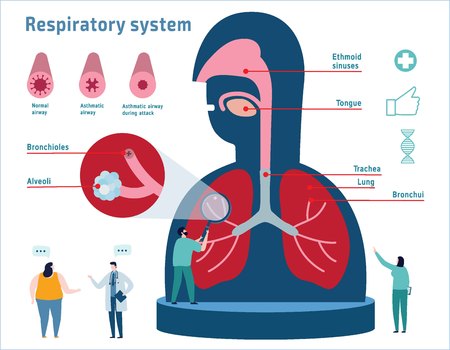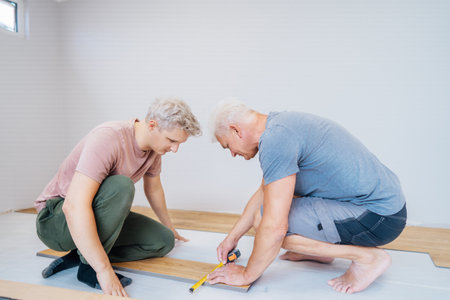1. Understanding Hand and Upper Extremity Anatomy
When it comes to therapeutic exercise and strengthening for the hand and upper extremity, having a basic understanding of anatomy is key. Knowing how the bones, joints, muscles, and nerves work together helps guide safe and effective rehabilitation after injury or surgery. Let’s break down these important parts in simple terms.
Bones of the Hand and Upper Extremity
The bones give our hands and arms their shape and provide the framework for movement. Here’s an easy-to-read table outlining the main bones involved:
| Region | Main Bones |
|---|---|
| Hand | Carpals (wrist bones), Metacarpals (hand bones), Phalanges (finger bones) |
| Wrist | 8 Carpal bones |
| Forearm | Radius, Ulna |
| Elbow | Humerus (upper arm), Radius, Ulna |
Joints That Allow Movement
Joints are where two or more bones meet. They allow us to bend, straighten, and rotate our hands and arms. The most important joints include:
- Wrist joint: Allows flexion, extension, and side-to-side movements.
- Metacarpophalangeal (MCP) joints: The “knuckles” that let fingers bend and straighten.
- PIP & DIP joints: Middle and end finger joints for fine movement.
- Elbow joint: Lets you bend (flex) or straighten (extend) your arm.
- Forearm joints: Allow rotation of the palm up (supination) or down (pronation).
Muscles Involved in Movement and Strengthening
The muscles are what actually move our hand, wrist, forearm, and elbow. They work in groups to produce different motions. Here’s a quick look at some major muscle groups:
| Area | Main Muscles |
|---|---|
| Hand & Fingers | Lumbricals, Interossei, Flexor digitorum, Extensor digitorum |
| Wrist & Forearm | Flexor carpi radialis/ulnaris, Extensor carpi radialis/ulnaris, Pronator teres, Supinator |
| Elbow | Biceps brachii (flexion), Triceps brachii (extension) |
Nerves That Control Sensation and Movement
Nerves send signals from your brain to your muscles to create movement—and back again to tell you what you feel. The three main nerves of the upper extremity are:
- Median nerve: Controls thumb movement and feeling in thumb/index/middle fingers.
- Ulnar nerve: Controls small muscles in the hand; sensation in ring/pinky fingers.
- Radial nerve: Helps extend the wrist/fingers; sensation on back of hand/thumb side.
The Big Picture for Rehab Exercises
A good grasp of this anatomy helps therapists choose exercises that target specific muscles and protect vulnerable areas during recovery. Whether youre regaining grip strength after a wrist fracture or working on elbow mobility post-surgery, understanding these basics sets the foundation for success in your rehab journey.
2. Principles of Therapeutic Exercise for Rehabilitation
Understanding the Basics of Rehabilitation
When working to restore function and strength in the hand and upper extremity, it’s important to follow some key principles. These include understanding how tissues heal, using the right amount of exercise at the right time (called graded loading), and making sure every treatment plan is tailored to each individual’s unique needs.
Tissue Healing: What You Need to Know
The body heals in different stages after an injury or surgery. Knowing these stages helps therapists choose exercises that are safe and effective. Here’s a simple breakdown:
| Healing Stage | What Happens | Best Exercise Approach |
|---|---|---|
| Inflammatory (First few days) | Pain, swelling, and redness as the body starts healing | Gentle movement to reduce stiffness; avoid heavy strengthening |
| Proliferative (Up to 6 weeks) | New tissue forms; swelling decreases | Start light strengthening, increase range-of-motion exercises |
| Maturation (Months after injury) | Tissue gets stronger and more organized | Progressive strengthening, functional activities, more resistance |
Graded Loading: Building Strength Safely
Graded loading means slowly increasing the amount or difficulty of exercise as your hand or arm heals. This helps prevent re-injury and ensures that muscles, tendons, and ligaments get stronger over time. For example, you might start with squeezing a soft ball, then move to putty exercises or resistance bands as you improve.
Examples of Graded Exercises
| Early Phase | Mid Phase | Late Phase |
|---|---|---|
| Passive stretches Tendon gliding Gentle gripping with foam ball |
Light resistance bands Wrist curls with light weights Finger extension with putty |
Weighted dumbbell exercises Push-ups on table Grip strengtheners with higher resistance |
Adapting to Individual Needs: Patient-Centered Care
No two people heal exactly the same way. Factors like age, activity level, type of injury, and personal goals all affect the rehab process. Therapists in the U.S. often use a collaborative approach—working together with patients to create a plan that fits their lifestyle. For instance, someone who works at a computer may focus on fine motor skills and endurance, while an athlete may need power and speed training.
Considerations for Personalizing Exercise Programs
- Pain Level: Adjust intensity if pain increases during or after exercise.
- Lifestyle: Include exercises that mimic daily tasks or job requirements.
- Motivation: Set short-term goals for quick wins to keep patients engaged.
- Cultural Preferences: Respect each patient’s background when choosing activities or setting expectations.
- Home Resources: Use household items like cans or water bottles when equipment isn’t available.
By following these principles—understanding tissue healing, using graded loading, and adapting plans for each person—therapeutic exercise can safely restore strength and function in the hand and upper extremity for people from all walks of life.

3. Range of Motion and Flexibility Techniques
Restoring and improving range of motion (ROM) and flexibility in the hand and upper extremity is crucial for regaining function, reducing stiffness, and preventing further injury. Evidence-based interventions focus on gentle yet effective techniques that help you move better and feel more comfortable during daily activities.
Why ROM and Flexibility Matter
When your hand, wrist, or arm loses mobility—due to injury, surgery, or conditions like arthritis—it can limit your independence. Regular ROM and flexibility exercises help maintain joint health, improve circulation, and prepare muscles for strengthening activities.
Types of ROM Exercises
| Exercise Type | Description | Example |
|---|---|---|
| Passive ROM | A therapist or another person moves your joint for you with no effort on your part. | Therapist gently bends your fingers after a fracture. |
| Active-Assisted ROM | You move the joint with some help from your other hand or a tool. | Using your opposite hand to assist your wrist in flexion/extension. |
| Active ROM | You move the joint yourself without any assistance. | Making a full fist and then straightening your fingers out flat. |
Flexibility Techniques for the Hand and Upper Extremity
- Tendon Gliding Exercises: These target finger tendons to reduce stiffness and prevent adhesions. Examples include making a hook fist, straight fist, and full fist in sequence.
- Nerve Gliding: Gentle movements that stretch nerves like the median nerve (helpful for carpal tunnel syndrome). For example, extending your fingers while bending the wrist back slightly.
- Wrist Stretches: Hold your arm out straight, palm down, and gently use the other hand to stretch your wrist up (extension) or down (flexion).
- Forearm Rotations: With elbow at your side, turn your palm up (supination) and down (pronation) slowly to increase forearm mobility.
Tips for Safe Practice
- Warm up with a warm towel or gentle activity before stretching.
- Avoid pushing into pain—mild discomfort is okay, but sharp pain is not.
- Breathe steadily during each movement to relax your muscles.
- If you’ve had surgery or an acute injury, follow your healthcare provider’s timeline and restrictions closely.
Frequency Recommendations (Based on Current Evidence)
| Activity | How Often? |
|---|---|
| ROM exercises | 2–3 times daily |
| Stretching/Flexibility work | Hold each stretch 10–30 seconds; repeat 2–4 times per session; do daily or as recommended by your provider |
This approach helps restore normal movement patterns in the hand and upper extremity while minimizing risk of reinjury. Always check with a licensed therapist if you’re unsure about which exercises are right for you or how to progress safely.
4. Progressive Strengthening Strategies
Guidelines for Implementing Resistance Training
Progressive strengthening is key to improving hand and upper extremity function. In American rehabilitation settings, resistance training starts with light loads and gradually increases as strength improves. The focus is on safety, correct form, and consistency. Here are some simple guidelines:
- Start Light: Begin with low-resistance bands or light dumbbells (1-2 lbs) to avoid injury.
- Increase Gradually: When you can complete 2 sets of 10-15 reps easily, move up to the next level of resistance.
- Focus on Quality: Proper technique is more important than heavy weights. Make sure each movement is controlled.
- Consistency Matters: Aim for 2-3 sessions per week for each muscle group, allowing rest days in between.
Functional Strengthening Activities
Functional strengthening means practicing movements that mimic real-life activities. This helps bridge the gap between exercise and everyday tasks like opening jars or carrying groceries. Here are a few examples:
| Activity | Description | How It Helps |
|---|---|---|
| Theraputty Squeezes | Squeeze and shape therapy putty with your fingers | Improves grip and finger strength for daily tasks |
| Towel Wringing | Twist a rolled-up towel as if wringing out water | Enhances wrist and forearm strength needed for chores |
| Cup Stacking | Stack and unstack plastic cups using one hand | Boosts coordination and dexterity for kitchen tasks |
| Lifting Groceries | Pretend to lift small grocery bags with proper form | Mimics real-life lifting and carrying motions |
The Use of Adaptive Equipment and Tools in Strengthening Programs
Adaptive equipment can make exercises safer and more effective, especially for those recovering from injury or surgery. In the U.S., therapists often recommend these tools to help people progress at their own pace:
- Therapy Putty: Comes in different resistances—great for squeezing, pinching, or rolling exercises.
- Hand Grippers: Adjustable tension grippers let you increase resistance as you get stronger.
- Foam Tubing: Placed over handles or utensils to make them easier to grip during exercises.
- Weighted Utensils or Cuffs: Add gentle resistance during daily movements or exercises.
- Resistance Bands: Color-coded bands provide customizable resistance levels for stretching and strengthening routines.
Sample Adaptive Equipment Chart
| Tool/Equipment | Main Use | User Level |
|---|---|---|
| Therapy Putty | Finger/hand strength exercises | Beginner to advanced |
| Hand Gripper | Palm grip strengthening | Intermediate to advanced |
| Foam Tubing | Aids grip on objects/tools | Beginner or limited mobility users |
| Resistance Bands | Total arm/hand strengthening exercises | All levels; highly adjustable |
| Weighted Cuffs/Utensils | Adds resistance to regular activities/exercises | Mild to moderate weakness users |
A Few Practical Tips from American Rehab Clinics:
- If you feel pain (not just muscle fatigue), stop and talk to your therapist.
- Add new exercises slowly—master one before moving on.
- If adaptive tools make it easier, use them! They’re designed to help you reach your goals safely.
- Your program should fit your lifestyle—be creative with household items if you don’t have specialized equipment at home.
This approach ensures that hand and upper extremity strengthening stays safe, effective, and relevant to daily life in the U.S.
5. Patient Education and Home Exercise Programs
Empowering Patients for Better Hand and Upper Extremity Rehabilitation
Patient education is a key part of any successful therapeutic exercise program for the hand and upper extremity. It helps patients understand their condition, the goals of therapy, and the importance of following through with exercises at home. In the U.S., where patients often lead busy lives, making instructions clear, relatable, and accessible can greatly increase engagement and compliance.
Best Practices for Educating Patients
- Use Everyday Language: Avoid medical jargon. Explain exercises and conditions in simple terms that everyone can understand.
- Show, Don’t Just Tell: Demonstrate each exercise in person or provide video links when possible. Visual aids make learning easier.
- Relate to Daily Activities: Connect exercises to activities patients care about—like typing, cooking, or sports—to highlight real-life benefits.
- Encourage Questions: Foster an open environment where patients feel comfortable asking questions about their therapy.
Promoting Engagement and Motivation
- Set Achievable Goals: Work with patients to set realistic short-term milestones. Celebrate small wins to keep motivation high.
- Track Progress: Use simple tracking charts or smartphone apps so patients can see their improvements over time.
- Create Routine Reminders: Suggest setting alarms or using sticky notes as cues for daily exercise sessions.
Designing Effective Home Exercise Routines
A good home exercise program should be easy to follow, adaptable, and fit into the patient’s lifestyle. Here’s a sample template for structuring a hand and upper extremity routine:
| Exercise Name | Description | Repetitions/Sets | Frequency |
|---|---|---|---|
| Tendon Glides | Smoothly move fingers from a straight hand to a fist and back again | 10 reps x 2 sets | 2-3 times/day |
| Wrist Flexor Stretch | Bend wrist back gently with opposite hand to stretch forearm muscles | Hold 15 seconds x 3 reps | 1-2 times/day |
| Palm Presses (Isometric) | Press palms together firmly at chest height and hold | Hold 10 seconds x 5 reps | Once/day |
| Pencil Rolls (Fine Motor) | Roll a pencil between fingers for coordination practice | 30 seconds x 2 sets | Once/day |
Troubleshooting Common Barriers at Home
- Lack of Time: Suggest breaking exercises into shorter sessions throughout the day—every bit counts!
- Pain or Discomfort: Remind patients that mild discomfort is normal, but sharp pain means they should stop and contact their therapist.
- Boredom: Rotate exercises every week or add fun challenges like timing themselves or involving family members.
- Doubt About Effectiveness: Share success stories or evidence-based outcomes to reassure patients that consistency pays off.
Your Role as a Partner in Recovery
The best results come when therapists and patients work together as partners. By providing clear instructions, encouragement, and support tailored to American lifestyles, you can help your patients regain strength and function in their hands and upper extremities—and empower them to take charge of their own recovery journey.


